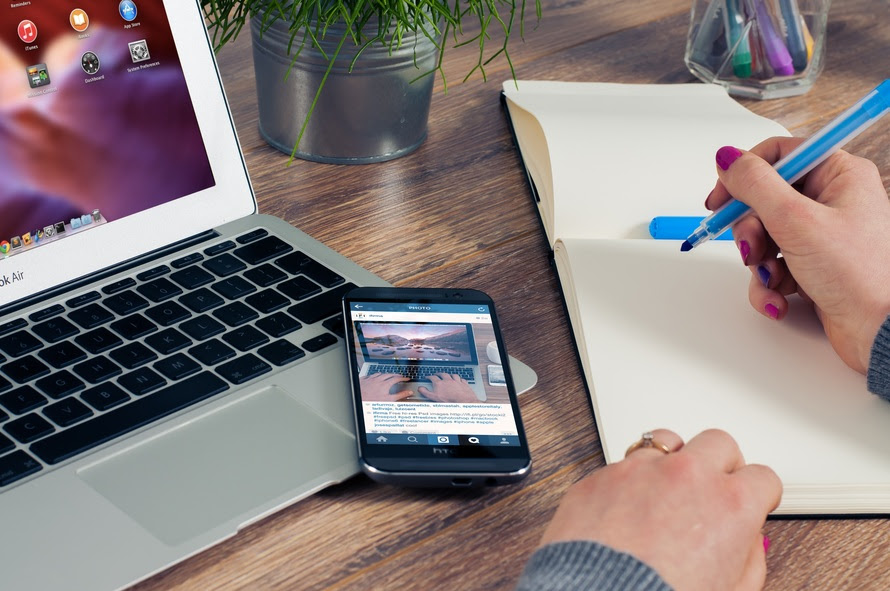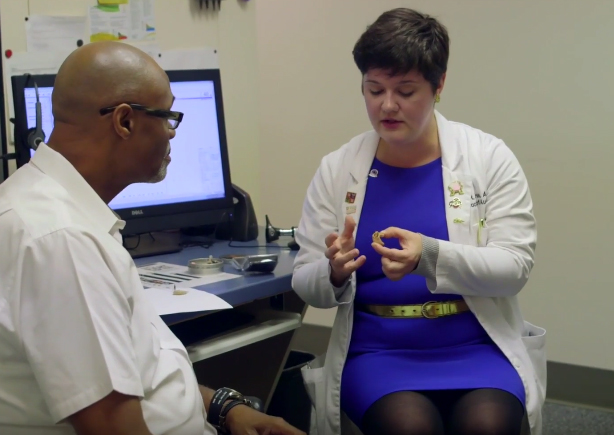How to Choose a Cell Phone Compatible with Your Hearing Aids
 Using the telephone is an essential feature of daily life. It connects us to loved ones and improves our safety. With advances in technology, cell phones are now more like mini-computers that not only make calls but take pictures and connect to the internet. Choosing a cell phone that will suit your lifestyle can be daunting even before considering your hearing needs. But now hearing aids and cell phones can work together for a more enjoyable experience.
Using the telephone is an essential feature of daily life. It connects us to loved ones and improves our safety. With advances in technology, cell phones are now more like mini-computers that not only make calls but take pictures and connect to the internet. Choosing a cell phone that will suit your lifestyle can be daunting even before considering your hearing needs. But now hearing aids and cell phones can work together for a more enjoyable experience.
“If you only want a good, basic cell phone that makes and receives calls, look for one with a hearing aid compatibility rating,” Dr. Rebecca Blaha, audiologist at the Pennsylvania Ear Institute, recommended.
Understanding the Hearing Aid Compatibility in Cell Phones
According to Drs. Blaha and Elizabeth Sedunov, in 1988, the Federal Communications Commission (FCC) created the Hearing Aid Compatibility Act requiring landline telephones to produce signals compatible with hearing aid telecoils or T coils. A telecoil is a small coil of wire wrapped around a magnet, which receives electromagnetic signals produced by the phone and translates them to audio output for the hearing aid user. This can either be manually accessed through a push button in a dedicated program or triggered automatically when the phone handset is placed over the hearing aid when the call is answered. The act was updated in 2003 to include digital wireless phones and cell phones. These phones were prone to additional interference that caused unwanted static during use.
What to Look for When Purchasing a Cell Phone
 When purchasing a hearing aid compatible phone, both Drs. Blaha and Sedunov recommend reviewing the packaging for a marking showing an “M/T” rating. A T rating of 4 or higher indicates that it meets the FCC guidelines of compatibility. The M rating indicates the phone is compatible even if the user does not have a telecoil installed in their device. It has an appropriate signal when using the hearing aid’s microphone.
When purchasing a hearing aid compatible phone, both Drs. Blaha and Sedunov recommend reviewing the packaging for a marking showing an “M/T” rating. A T rating of 4 or higher indicates that it meets the FCC guidelines of compatibility. The M rating indicates the phone is compatible even if the user does not have a telecoil installed in their device. It has an appropriate signal when using the hearing aid’s microphone.
If you are a bit more high-tech, then look for Bluetooth technology. Bluetooth is a universal wireless signal that allows data transfer between two or more electronic devices. Data can include audio from computers, tablets, smartphones, televisions, and stereo equipment. Bluetooth streaming capability can help individuals with hearing aids listen more comfortably, often in both ears, (stereo) which can improve call clarity as well. The overall improved experience makes phone use more enjoyable with less static, whistling, and other noises or feedback generally associated with traditional phone use. As a result of these advances, users no longer have to rely on speaker phone to improve understanding at the expense of privacy.
In addition to Bluetooth, hearing aid manufacturers are also enhancing hearing aid use through iPhone and Android-compatible apps for smartphones. Apps can allow changes to volume, programs/memories, and stream music and television from the phone to the hearing aids. Most major hearing aid companies allow users to connect hearing aids through Bluetooth and provide a more visual and easy to use discrete adjustment system.
For more information and guidance, contact the Pennsylvania Ear Institute (PEI) of Salus University to schedule an appointment to assess which technologies will work best for you.